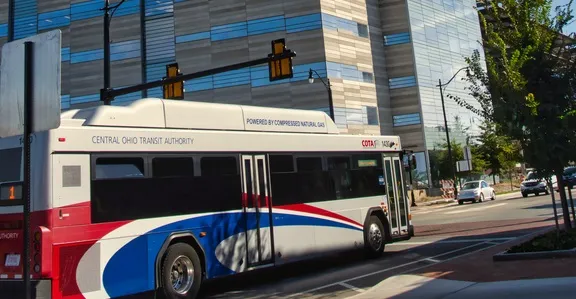A self-driving truck developed by Otto has been travelling on two Ohio roads after state officials announced details of new investments to support innovative transportation technology, says Associated Press.
The vehicle is travelling on a 35-mile stretch of US Route 33 and in central Ohio between Dublin and East Liberty, home to the Transportation Research Center, an independent testing facility. It travels in regular traffic, with a driver in the cab to intervene should problems arise.
Officials say
December 1, 2016
Read time: 2 mins
A self-driving truck developed by Otto has been travelling on two Ohio roads after state officials announced details of new investments to support innovative transportation technology, says Associated Press.
The vehicle is travelling on a 35-mile stretch of US Route 33 and in central Ohio between Dublin and East Liberty, home to the Transportation Research Center, an independent testing facility. It travels in regular traffic, with a driver in the cab to intervene should problems arise.
Officials say that section of Route 33, a four-lane, divided road, is an important piece of autonomous vehicle research in the state and will become a corridor where new technologies can be safely tested in real-life traffic, aided by a fibre-optic cable network and sensor systems slated for installation next year.
The self-driving truck is also expected to travel next week on part of the Ohio Turnpike.
The turnpike's executive director said in August that officials were moving toward allowing testing of self-driving vehicles on the 241-mile toll road, a heavily travelled connector between the East Coast and Chicago.
The vehicle is travelling on a 35-mile stretch of US Route 33 and in central Ohio between Dublin and East Liberty, home to the Transportation Research Center, an independent testing facility. It travels in regular traffic, with a driver in the cab to intervene should problems arise.
Officials say that section of Route 33, a four-lane, divided road, is an important piece of autonomous vehicle research in the state and will become a corridor where new technologies can be safely tested in real-life traffic, aided by a fibre-optic cable network and sensor systems slated for installation next year.
The self-driving truck is also expected to travel next week on part of the Ohio Turnpike.
The turnpike's executive director said in August that officials were moving toward allowing testing of self-driving vehicles on the 241-mile toll road, a heavily travelled connector between the East Coast and Chicago.









